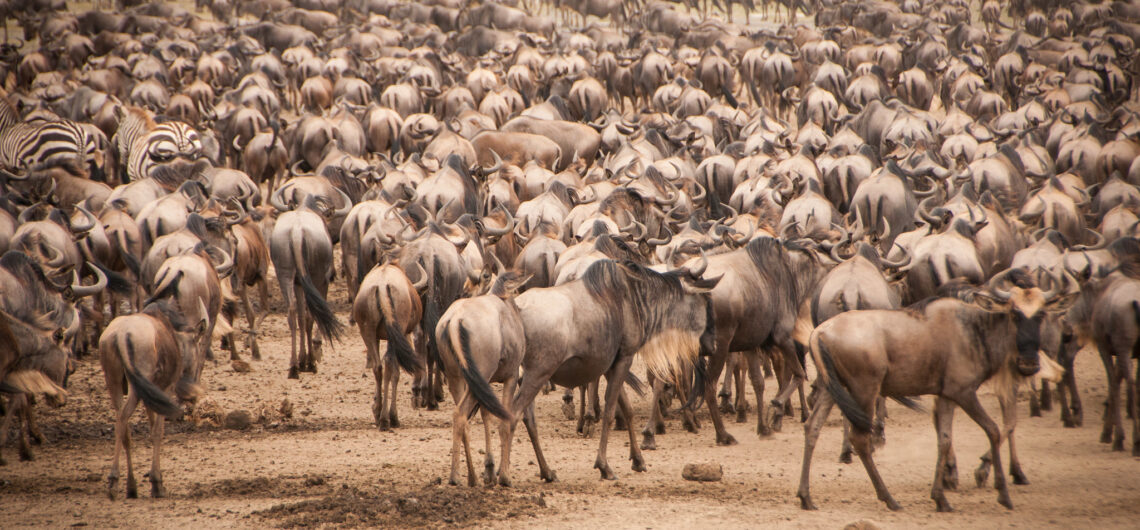The Great Wildebeest Migration is one of nature’s most awe-inspiring events, captivating wildlife enthusiasts and travelers alike. Every year, millions of wildebeest, zebras, and gazelles embark on an epic journey across the Serengeti-Mara ecosystem in East Africa. This article delves into the intricacies of the migration, exploring its significance, timing, challenges, and the best ways to witness this spectacular phenomenon.
What is the Great Wildebeest Migration?
The Great Wildebeest Migration is an annual event involving over 1.5 million wildebeests, along with hundreds of thousands of zebras and gazelles. The migration spans across the Serengeti National Park in Tanzania and the Maasai Mara National Reserve in Kenya. This incredible movement is driven by the search for fresh grazing pastures and water sources, which are vital for the survival of these herds.
The Timing of the Migration
The timing of the migration is largely dictated by the region’s rainfall patterns, which influence the availability of grazing land. The journey can be divided into several key phases:
1.Calving Season (January – March): The migration typically begins in the southern Serengeti, where the wildebeest converge to calve. This period is critical as over 500,000 calves are born in a relatively short time frame. The abundance of newborns attracts predators, making this a high-risk period for the herds.
2.The Journey North (April – June): As the rains move north, the herds follow, gradually making their way towards the central Serengeti. This phase involves crossing rivers and encountering various obstacles, including predators and rough terrain.
3.The Maasai Mara (July – October): By mid-year, the herds reach the Maasai Mara in Kenya. This period is marked by dramatic river crossings, particularly at the Mara River, where crocodiles lie in wait. The Mara provides rich grazing grounds and temporary relief from the more arid conditions of the southern Serengeti.
4.Return South (November – December): As the rainy season in the Maasai Mara subsides, the herds begin their return journey to the Serengeti, where the cycle starts anew.
Why Do the Wildebeest Migrate?
The primary driver behind the migration is the search for food and water. The Serengeti-Mara ecosystem has a seasonal rainfall pattern that creates lush grazing grounds in the southern Serengeti during the calving season and drier conditions in the northern regions. The migration ensures that the herds continually move to areas with optimal grazing conditions, thus supporting their survival.
The Challenges of the Migration
The Great Wildebeest Migration is fraught with challenges:
1.Predation: Predators such as lions, cheetahs, and hyenas follow the herds, preying on the weak and young. The calving season is particularly perilous due to the high number of vulnerable newborns.
2.River Crossings: The Mara River crossings are among the most dramatic and perilous aspects of the migration. Wildebeests must navigate treacherous waters while avoiding crocodile attacks.
3.Disease: The movement of such large numbers of animals increases the risk of disease spread. Outbreaks of diseases like foot-and-mouth can have devastating effects on the herds.
4.Human Impact: The migration faces threats from human activities, including habitat encroachment and climate change. Conservation efforts are crucial to ensure the continuation of this natural wonder.
How to Experience the Great Wildebeest Migration
Witnessing the Great Wildebeest Migration is a bucket-list experience for many travelers. Here’s how to make the most of it:
1.Best Time to Visit: The optimal time to witness the migration depends on what you want to see. For calving season, visit between January and March. To observe the dramatic river crossings, plan your trip between July and September in the Maasai Mara.
2.Guided Safaris: Opt for a guided safari to enhance your experience. Experienced guides can offer insights into animal behavior and ensure you’re in the right place at the right time.
3.Luxury Lodges and Camps: For a more comfortable experience, consider staying in luxury lodges or mobile camps. Many accommodations are strategically located to offer prime viewing opportunities.
4.Conservation and Responsible Tourism: Support eco-friendly tourism practices that benefit local communities and contribute to wildlife conservation. Respect the natural environment and follow park regulations.
Conservation Efforts and Future Outlook
The Great Wildebeest Migration is a critical component of the Serengeti-Mara ecosystem, and its preservation is essential. Conservation organizations and local governments are working to protect the migration corridor, address human-wildlife conflicts, and mitigate the impacts of climate change.
Efforts include anti-poaching initiatives, habitat preservation, and community engagement programs. Continued support for these conservation efforts will help ensure that future generations can witness this incredible natural spectacle.
The Great Wildebeest Migration is a testament to the resilience and beauty of nature. This epic journey of survival and adaptation is not just a visual feast but also a profound reminder of the interconnectedness of life on Earth. Whether you’re a seasoned traveler or a nature enthusiast, experiencing the migration firsthand is an unforgettable adventure that underscores the importance of preserving our planet’s natural wonders.
For those planning a visit, remember that the migration is a dynamic and ever-changing event. Staying informed about the latest developments and working with reputable tour operators will enhance your experience and contribute to the conservation of this extraordinary phenomenon.


Comments